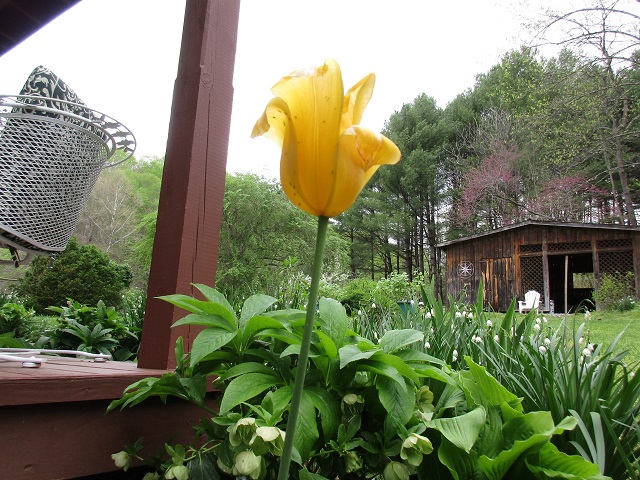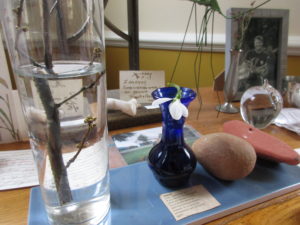An SOS from those stranded at sea and the embodiment of Whitman’s “ever returning spring”, May Day is the call of the season. We’re all islands looking for connection now.
This time of quarantine and canceled garden tours is one of the most beautiful springs in memory. Never has it been more spangled here in the hollow.
 Billows of dogwood, spirea and viburnum ebb like creamy froth into the canopy of the woods and spicebush swallowtails dance yellow and black along the creek. The matrix of grasses, sedges and wildflowers weaves its magic web in the meadow.
Billows of dogwood, spirea and viburnum ebb like creamy froth into the canopy of the woods and spicebush swallowtails dance yellow and black along the creek. The matrix of grasses, sedges and wildflowers weaves its magic web in the meadow.
The pandemic becomes pedantic, explicating the truth of the most enduring cliches:
Live every day as if it’s your last. Don’t take the little things for granted. Be grateful for what you have. And of course, you never know when it’s the last time. I had my last Margarita at the Guadalajara in Charlottesville in February with all my old Morven friends. We planned to meet again in March.
Yet, hasn’t it always been true that we don’t know what the future holds? Live like there’s no tomorrow. Is that a good thing?
We will join Candide in this best of all possible worlds and turn from philosophizing to tending our gardens.
John’s cover crop of kale, peas, crimson clover, and vetch (!) has been a great success. Sowed in late summer to cover bare ground before the wedding, the kale fed us all winter and into spring along with pea tendrils and kale flowers and tender new leaves for spring salads. The chrome yellow flowers are abuzz with myriad pollinators – bumble bees, honey bees, carpenter bees, wasps, and tiny flies of all kinds.
Dozens of zinnias, four-o-clocks and hollyhocks started from seed in March await some good warm soil and last frost date of May 15, along with early starts of tomatoes, jalapenos, arugula, parsley and cilantro from 5th Seasons in Charlottesville. The fellow who helps around here, my beloved, is weeding and prepping their beds and spreading last year’s compost on the asparagus bed.
Over the years I’ve seen the importance of letting things go to seed, especially Narcissus and the minor bulbs. You never know what’s going to re-seed, so why not give everything a chance? Many little daffodils from my collections pop up in the outer meadows.
This is our first year with the lovely Camassia leichtlinii ‘Caerulea’ and the third (once we stopped mowing it down) of the classic Lewis & Clark C. quamash, or Indian Hyacinth, both available from Van Engelen. I am very anxious to let them drop their seed as they’re supposed to be good naturalizers. Lewis’ journals describe seeing large swaths of the Quamash in Idaho along the Lolo Trail that from a distance looked like clear blue water.
Am making a note to divide our old bearded iris patches late this summer so they’ll start blooming again next spring. The one thing the gardener always has is hope.































